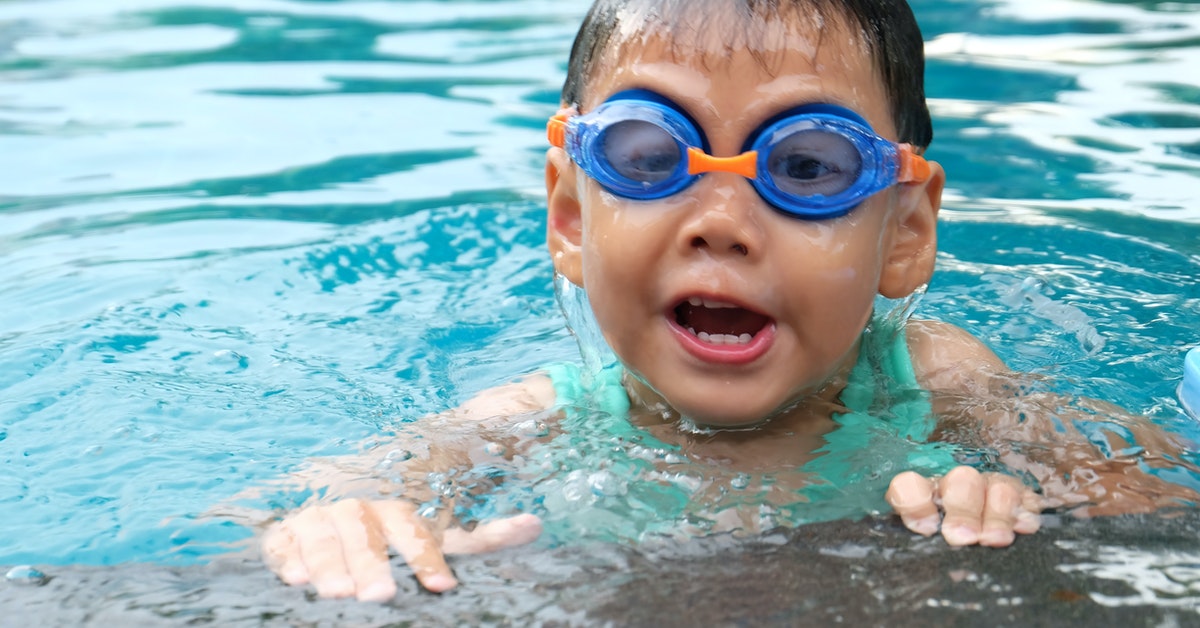Swimmer’s Ear (Otitis Externa)
Swimmer’s ear (also called acute otitis externa) is a painful condition that affects the outer ear and ear canal that is caused by infection, inflammation, or irritation. These symptoms often occur after water gets trapped in your ear, especially if the water has bacteria or fungal organisms in it. Because this condition commonly affects swimmers, it is known as swimmer’s ear.
Swimmer’s ear often affects children and teenagers, but can also affect those with eczema (a condition that causes the skin to itch), those with highly sensitive or allergic skin reactions, excess earwax, and who wear hearing aids or earbuds. Your primary care provider or ENT (ear, nose, and throat) specialist, or otolaryngologist, will prescribe treatment to reduce your pain and treat the infection.
What Are the Symptoms of Swimmer’s Ear?
Signs and symptoms of swimmer’s ear may include:
- Itching inside the ear (common)
- Pain inside the ear that gets worse when you tug on the outer ear (common)
- Sensation that the ear is blocked or full
- Drainage from the ear
- Fever
- Decreased hearing
- Intense pain that may spread to the neck, face, or side of the head
- Swollen lymph nodes around the ear or in the upper neck
- Redness or swelling of the skin around the ear
How We Can Help
After meeting with the Naugatuck Valley ENT team, we will provide recommended treatment for an ear infection or ear condition that depends which depends on the patient’s age and the severity of the condition. If you or your child is experiencing ear pain with a fever, please call our office immediately to make an appointment. You can contact Naugatuck Valley ENT at (203) 578-4630.
If left untreated, a certain amount of hearing loss may occur. When the infection clears up, hearing usually returns to normal. Recurring ear infections (chronic otitis externa) are also possible. Without treatment, infections can continue to occur or persist.
Bone and cartilage damage (malignant otitis externa) are also possible due to untreated swimmer’s ear. If left untreated, ear infections can spread to the base of your skull, brain, or cranial nerves. Diabetics, older adults, and those with conditions that weaken the immune system are at higher risk for such dangerous complications.
To evaluate you for swimmer’s ear, your doctor will look for redness and swelling in your ear canal, and ask if you are experiencing any pain. Your doctor may also take a sample of any abnormal fluid or discharge in your ear (ear culture) to test for the presence of bacteria or fungus if you have recurrent or severe infections.
What Causes Swimmer’s Ear?
A common source of the infection is increased moisture trapped in the ear canal from baths, showers, swimming, or moist environments. When water is trapped in the ear canal, bacteria that normally inhabit the skin and ear canal multiply, causing infection of the ear canal. Swimmer’s ear needs to be treated to reduce pain and eliminate any effect it may have on your hearing, as well as to prevent the spread of infection.
Other factors that may contribute to swimmer’s ear include:
- Contact with excessive bacteria that may be present in hot tubs or polluted water
- Excessive cleaning of the ear canal with cotton swabs or anything else that may cause breaks in the ear canal skin allowing bacteria in
- Contact with certain chemicals such as hair spray or hair dye (avoid this by placing cotton balls in your ears when using these products)
- Damage to the skin of the ear canal following water irrigation to remove wax
- A cut in the skin of the ear canal
- Other skin conditions affecting the ear canal, such as eczema or seborrhea
Finally, what’s often called swimmer’s ear can also caused by ill-fitting hearing aids, or contaminated earbuds, earphones, or other ear devices.
What Are the Treatment Options?
Treatment for the early stages of swimmer’s ear includes careful cleaning of the ear canal and use of eardrops that inhibit bacterial or fungal growth and reduce inflammation. Mildly acidic solutions containing boric or acetic acid are often effective for early infections.
Before using any drops in the ear, it is important to be sure you do not have a perforated eardrum (an eardrum with a hole in it). Check with your ENT specialist if you have ever had a perforated, punctured, or injured eardrum, or if you have had prior ear surgery.
Drops are more easily administered if done by someone other than the patient, and the patient should lie down with the affected ear facing upwards. Prescription drops should be placed in the ear as directed on the label. After drops are administered, the patient should remain lying down for a few minutes, so the drops have time to work.
If you do not have a perforated eardrum or a tube in your eardrum placed by a doctor in the past, you can make your own eardrops using rubbing alcohol or a mixture of half alcohol and half vinegar. These eardrops will evaporate excess water and keep your ears dry.
For more severe infections, your doctor may prescribe antibiotics to be applied directly to the ear. If the ear canal is swollen shut, your doctor may place a sponge or wick in the canal so the antibiotic drops will enter the swollen canal more effectively. Pain medication may also be prescribed. If you have tubes in your eardrum, a non-ototoxic (do not damage your hearing) topical treatment should be used. Topical antibiotics are effective for infection limited to the ear canal. Oral antibiotics may also be prescribed if the infection goes beyond the skin of the ear canal.
Follow-up appointments are very important to monitor your condition, to clean the ear again, and to replace the ear wick as needed. Your ENT specialist has specific equipment and expertise to effectively clean the ear canal and treat swimmer’s ear. With proper treatment, most infections should clear up in seven to 10 days.
How Can Swimmer’s Ear be Prevented?
A dry ear is unlikely to become infected, so it is important to keep the ears free of moisture during swimming or bathing. Prevention tips include:
- Use ear plugs when swimming.
- Use a dry towel or hair dryer (from a distance) to dry your ears.
- Have your ears cleaned periodically by an ENT specialist if you have itchy, flaky or scaly ears, or extensive earwax.
- Do not use cotton swabs to remove ear wax. They may pack ear wax and dirt deeper into the ear canal, remove the layer of earwax that protects your ear, and irritate the thin skin of the ear canal. This creates an ideal environment for infection.
What Questions Should I Ask My Doctor?
- What can I use at home for pain control for my child or me?
- Can my child swim while having swimmer’s ear?
- My child has excess ear wax. Can I use cotton swabs to help remove it?
Copyright 2022. American Academy of Otolaryngology–Head and Neck Surgery Foundation. Last reviewed August 2018.


